#benvenuto cellini
Text
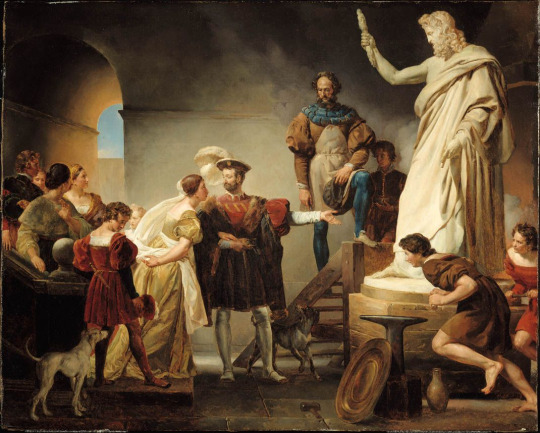
Francis I in Benvenuto Cellini's Studio by Alexandre Évariste Fragonard
#alexandre évariste fragonard#art#francis i#françois i#benvenuto cellini#france#french#french court#duchess d’étampes#neoclassical#romantic#romanticism#history#king#sculptor#royal#royalty#patronage#sculptures#sculpture#statue#statues#europe#european#troubadour
74 notes
·
View notes
Text




Cellini's Saliera, Benvenuto Cellini, 1543
#art history#art#italian art#aesthethic#ancient greece#greek mythology#saliera#benvenuto cellini#salt cellar#francis i#jewellery#goldworking#artisan#kunsthistorisches museum#gaia#neptune#poseidon#earth#sea#salt#pepper#16th century#treasure
115 notes
·
View notes
Text
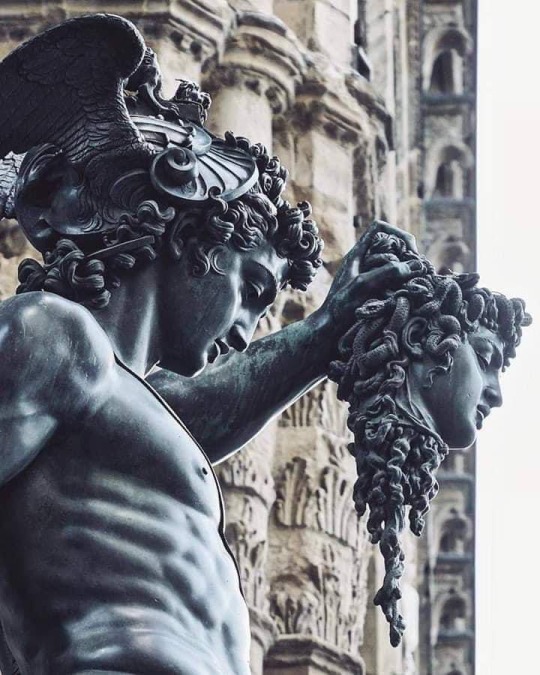
Perseus with the Head of Medusa.
Sculpture by Benvenuto Cellini, 1554.
Firenze, Italia
.
.
125 notes
·
View notes
Text

Five Studies, Benvenuto Cellini, c. 1500s
Source: artrenewal.org
69 notes
·
View notes
Text
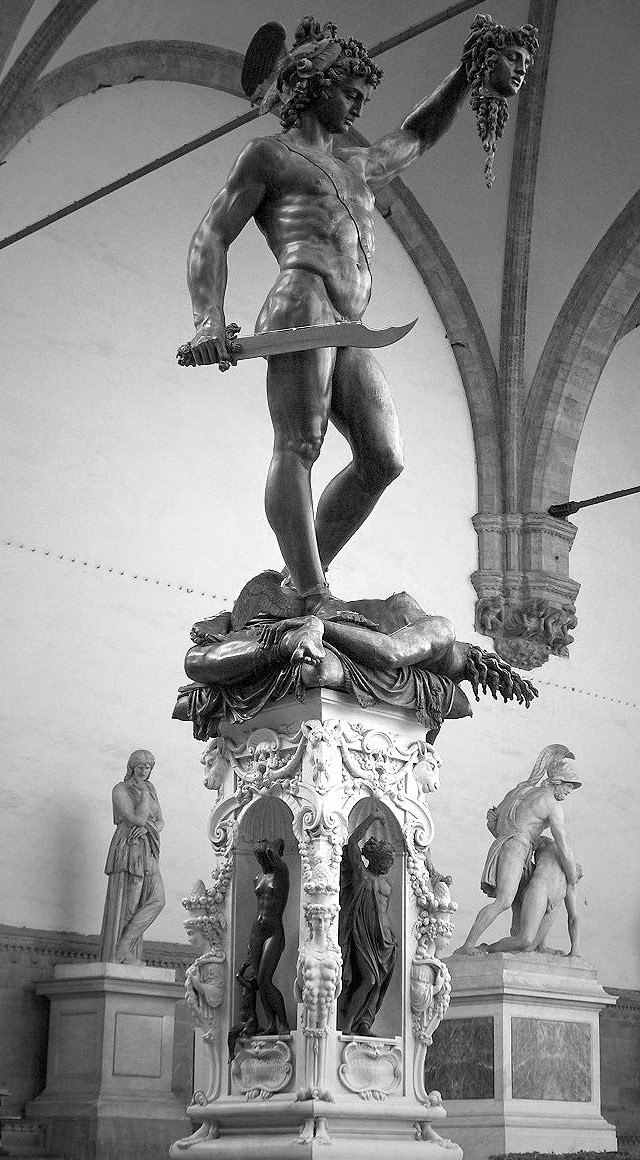
Perseus with the Head of Medusa, Benvenuto Cellini, 1545–1554.
53 notes
·
View notes
Text

Benvenuto Cellini. Cristo crucificado (1559 - 1562) Real Basílica de San Lorenzo de El Escorial
57 notes
·
View notes
Text
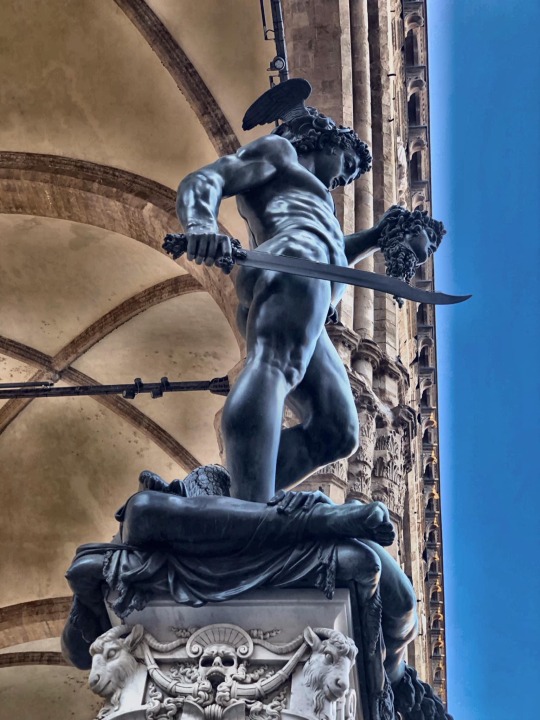
sculpture by benvenuto cellini
72 notes
·
View notes
Text

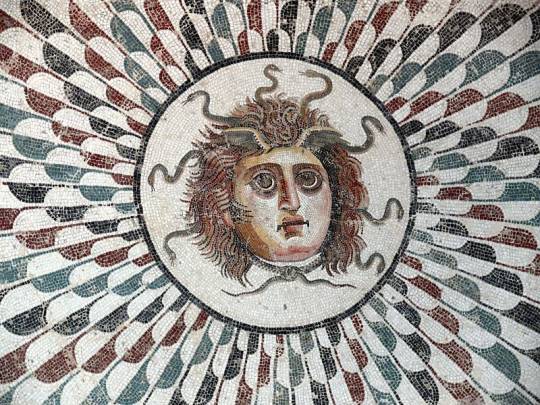
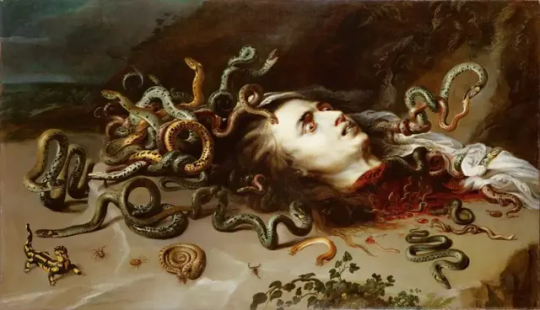

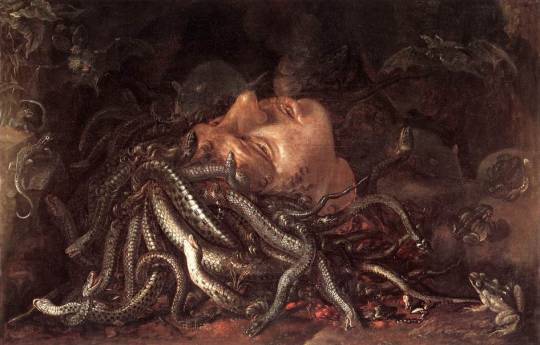

“Flee, for if your eyes are petrified in amazement, she will turn you to stone.” ~ Gaspare Murtola
Medusa in Ancient Greek means “guardian, protectress”
#medusa#Caravaggio#Tepidarium of Dar Zmela house#Head of Medusa#Benvenuto Cellini#perseus#classical art#classic lit quotes#classic literature#classic academia#classics#greek mythology#greek gods#greek posts#ovid#Gaspare murtola#Medusa Murtola#peter paul rubens#Arnold Böcklin#Giorgio Vasari#leonardo da vinci#dark academia#romantic academia#classical academia#renaissance art#dark academia aesthetic#baroque painting#classism
120 notes
·
View notes
Text

Benvenuto Cellini (Italian, 1500-1571) • The Nymph of Fontainebleau • c. 1543 • Bronze relief
Commissioned by Francis I, the Nymph of Fontainebleau is a larger-than-lifesize bronze plaque showing a reclining Diana from Greek/Roman mythology. Diana was a huntress and so an ideal subject for the French king who was a passionate hunter of forest game. The nude goddess has a massive stag with huge antlers looking over her shoulder while at the sides of the piece are deer, wild boars, and hunting dogs. The sculpture was originally meant to sit above the entrance gate of the Palace of Fontainebleau, hence its misleading name, but the king never got around to having it installed. When Henry II of France became king (r. 1547-1559 CE), he decided the sculpture was more suitable for a hunting lodge and so gave it to his mistress Diane de Poitiers (1499-1566 CE) for her home, the Chateau d'Anet, south of Paris. Today, the sculpture is in the Louvre museum in Paris.
#art#fine art#art history#sculpture#benvenuto cellini#mannerism#italian artist#renaissance art#fountainbleu#musée du louvre#bronze relief#nymphs in artworks#art blog#pagan sphinx art blog#art appreciation#artwork
32 notes
·
View notes
Text
funniest death scene in opera goes to pompeo from berlioz’s benvenuto cellini, a minor character who gets stabbed to death by the title character because he got in the way
and then he just goes “ah! i’m dead!” and immediately dies
#it’s so fucking funny#opera tag#opera#benvenuto cellini#berlioz#hector berlioz#rip pompeo you were just vibing
11 notes
·
View notes
Text
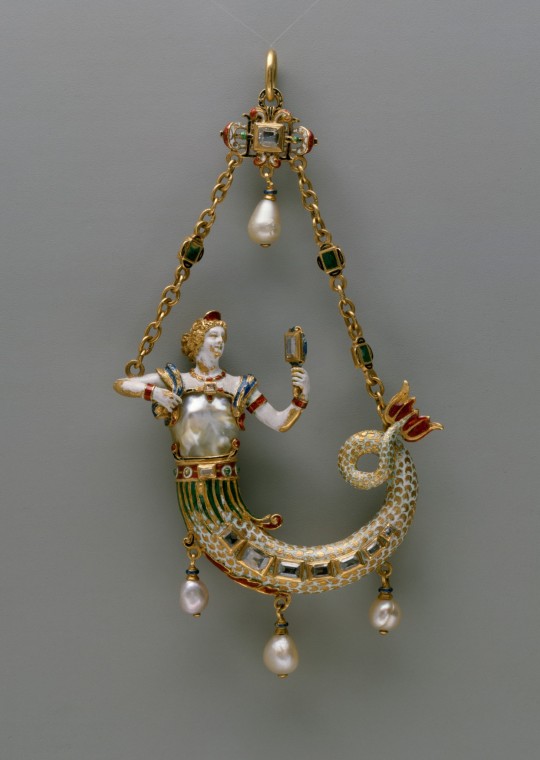






https://en.m.wikipedia.org/wiki/Reinhold_Vasters
#reinhold vasters#art forgery#19th century#16th century#17th century#northern mannerism#goldsmith#benvenuto cellini#wenzel jamnitzer#mannerism#my post
27 notes
·
View notes
Text

Cellini e la sfida della fusione, forchette, pentole e padelle per realizzare il Perseo.
Il Perseo bronzeo di Benvenuto Cellini si trova in piazza della Signoria a Firenze da oltre 500 anni.
Era apparso dinnanzi agli occhi dei fiorentini sotto la Loggia dei Lanzi nel 1554 per volere di Cosimo I de' Medici, secondo duca di Firenze e primo Granduca di Toscana.
La fusione in bronzo fu per l'artista una sfida senza eguali.
Di norma, nell’antichità, le statue in bronzo venivano realizzate assemblando i diversi pezzi dell’opera fusi separatamente, per poi saldare il tutto e livellare i bordi tramite limatura.
L’uso della fusione di un oggetto in un unico blocco, portò gli artisti a sperimentare tale tecnica anche con statue di varie dimensioni e dalle posizioni complesse.
Il Perseo è l’esempio più celebre di questi esperimenti, costituita da soli tre pezzi: la testa di Medusa, il corpo dell’eroe e il corpo del mostro sotto i suoi piedi.
Il Cellini stesso, ci spiega, nella sua biografia, come la realizzazione lo abbia messo a dura prova per un concatenarsi di problematiche pratiche durante la fusione.
Prima le febbri dell’artista (causate dall’esalazione dei metalli), poi i fuochi della fornace quasi spenti a causa di un temporale, infine l’insufficienza di stagno della lega di fusione.
Per la statua di Perseo, alta più di 5 metri, furono necessari 18 quintali di metallo!
Quest’ultimo problema, portò l’artista a dover rimediare a tale mancanza con un’idea astuta, ovvero impiegò tutte le stoviglie della bottega ed anche alcune delle cucine di Palazzo Vecchio, completando così la colatura.
Cellini si vide costretto a sacrificare nella fusione anche il proprio personale servizio di vasellame e posateria!
Il risultato di tante peripezie fu una fusione quasi perfetta, tanto da stupire lo stesso Cellini; solo alcune parti, infatti, vennero rifatte (precisamente il piede destro e parte dello stinco) ed altre solo da sistemare e definire.
La statua, iniziata nel 1545, venne esposta in Piazza della Signoria nel 1554, dopo 9 anni di tentativi e migliorie.
Quest'opera resta ancora oggi un dono pubblico e magnifico, in bella vista di chiunque transiti liberamente, giorno e notte, nei pressi di Piazza della Signoria.
Perseo, Benvenuto Cellini, Loggia dei Lanzi, Firenze
3 notes
·
View notes
Text

Jesus on the cross, Benvenuto Cellini, 1556-62
#art history#art#italian art#aesthethic#el escorial#benvenuto cellini#marble#statue#sculpture#jesus#christ#jesus on the cross#crucifix#crucifiction#16th century
34 notes
·
View notes
Photo
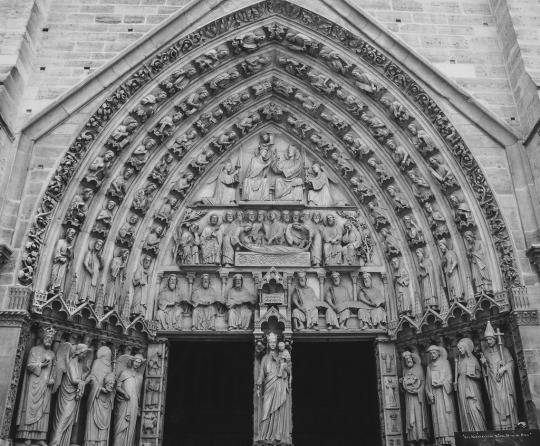
Portal of the Virgin, Notre-Dame de Paris Cathedral — Paris, France
* * *
Letter to a Modern Artist, part I
“I have been meaning to write: I have circled the writing pad as the swans circled Delos; I have hovered above the white paper as the Eagles hover above the compound in the Philosophic Egg, hoping for a birth of the spirit that drives one to get things done. The trouble with me is I have always got my nose buried in heart and mind consuming stuff, and when I finallly look up whoa! It's already spring. And here's me thinking it's only 3 a.m. I have obviously lost the ability to tell late from early. Do you know where early ends and late starts?
I am aware that you consider me particularly ignorant on the subject of Art, and I really do not take offense at such an evaluation, as it is probably more right than wrong. But the works of Art I like are not ignorant and the beauty of them are not in the least affected by my ignorance, but, as I look upon them, find myself washed clean of the leprosy of false art, with which the world is filled to brimming. Perhaps it would be useful at this point to give you a list of small selection of the works I value, because, God forbid, it might be Andy Warhole for all you know, and unless you know what I value, you cannot know where my heart is. If Earth was heaven, I should live in a Gothic Cathedral with great rose windows and make a portal just like the Virgin portal at Notre-Dame. The doors would be Ghiberti's and the ceilings Michelangelo's. On the walls I'd hang Leonardo's St. John and the Annunciation, Poussin's Et in Arcadia Ego (Les Bergers d'Arcadie. Later version of the Louvre), also Poussin's Orpheus and Eurydice. Titian's Bacchus and Ariadne, and The Entombment I'd fetch from the Louvre. The same gallery would also suffer the loss of the Silver Statue of the Virgin and Child and Amiens Cathedral would be minus their Madonna. Bernini and Michelangelo would supply the centerpieces and Cellini the golden nic-nacs. The Greeks would be useful as tile layers, but hey, who would object to a few Romans lending a helping hand? I should ask God to plant me a garden but this time without Adam and Eve, those greedy fruit eaters.
All these great works are full of symbolism for those who care to read them. They are hieroglyphs from God, created in stone or on canvas by the Servants of the Lords of Light. And I truly believe that to be a true Artist is to be a Servant of the Higher Powers and of Truth; for to be otherwise is to be a creator of wallpaper—or of shelf-fillers—or of infernal cacophony.
But the pure Beauty of Great Art lifts the thoughts away from earthly cares and woes, and brings Grace to the inner minds of those who look upon them with eyes that see; clarifying the sight until there are no more boundaries and no distance. I see these Works as the materialized 'shadows' of Holy Inspiration, earthly representatives of what the great Artist sees in his enlightened Vision, and which he can only reproduce as best he can with whatever talent and sweat is his. (I can only imagine that the true Artist will never be satisfied with the reproduction of his vision, for no work of Art can ever tell us exactly what those who wrote or painted saw or heard or felt in their visions. And I speak here only of great works, not of the twaddle poured out by would-be artists.)”
— Edda Livingston
#Portal of the Virgin#Notre-Dame de Paris#Cathedral#Art#Beauty#Sculpture#Wisdom#Edda Livingston#Letter to a Modern Artist#Modern Art#Nicolas Poussin#Et in Arcadia Ego#Leonardo da Vinci#Orpheus and Eurydice#Bacchus and Ariadne#The Entombment#Titian#Michelangelo#Benvenuto Cellini
19 notes
·
View notes
Photo

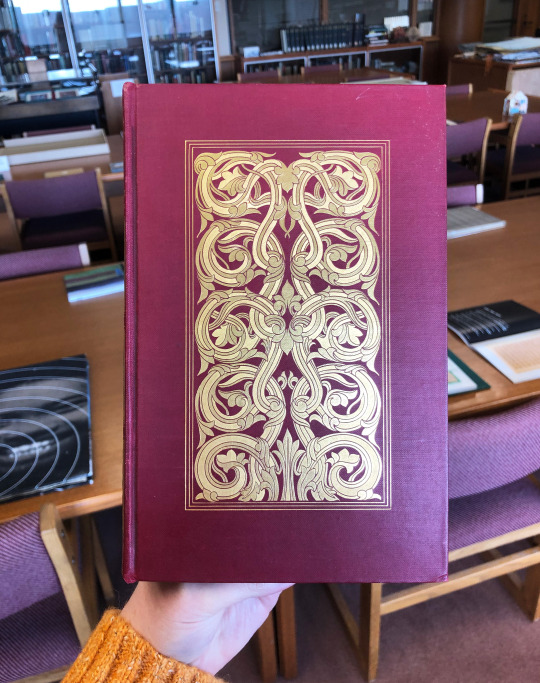




Publishers’ Binding Thursday
This week’s publishers’ binding is our 1906 copy of The Life of Benvenuto Cellini, Written by Himself, published by Brentano’s in New York. Benvenuto Cellini (1500-1571) was an Italian goldsmith, sculptor, author, and murderer. His life seems to have been very interesting, with multiple murders (including the murder of his brother’s killer and the murder of a rival) and other issues that got him in trouble with the law. Definitely worth a read of the ol’ Wikipedia page. His biography was begun in 1558 and finished in 1563.
The binding is quite a nice one, in red bookcloth with gold filigree on the front cover and spine, and a decorative gold circle with the initials B.C. on the back cover. The book is illustrated mainly with portraits and busts, the most interesting to me being the one of Lorenzo de’Medici featured here, with strange, demonic-looking heads in the background.
View more Publishers’ Binding Thursday posts.
-- Alice, Special Collections Department Manager
#Publishers' Binding Thursday#The Life of Benvenuto Cellini#Wikipedia#Benvenuto Cellini#publishers' bindings#Medici#Lorenzo de'Medici#autobiographies#Brentano's
39 notes
·
View notes
Photo


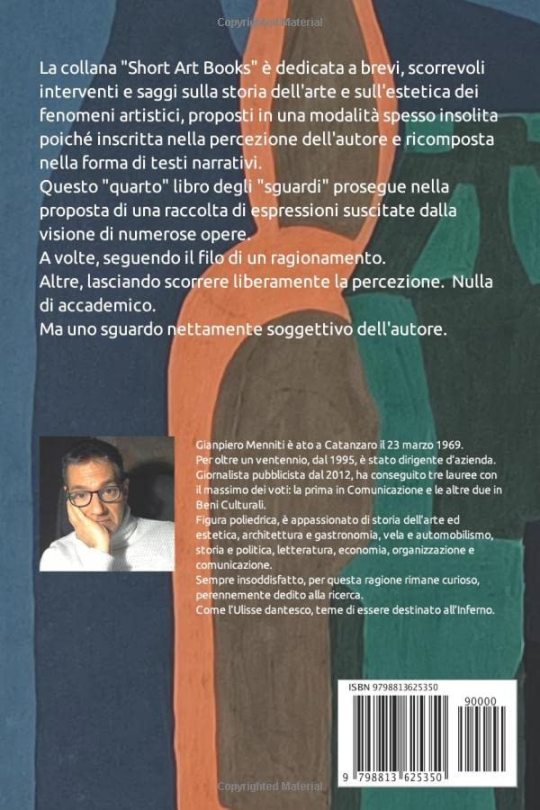
Da: SGUARDI SULL’ARTE LIBRO QUARTO - di Gianpiero Menniti
IL PARADOSSO
Vincitore e vinto.
Nessuna differenza.
Identico sguardo.
Identico destino.
Il '500, in una sola figura.
Benvenuto Cellini (1500-1571): "Perseo con la testa di Medusa", 1545-1554, Loggia dei Lanzi, Firenze
In copertina: Maria Casalanguida, “Bottiglie e cubetto”, 1975, collezione privata
#thegianpieromennitipolis#Benvenuto Cellini#arte#arte moderna#arte italiana#scultura#scultura italiana#firenze
25 notes
·
View notes